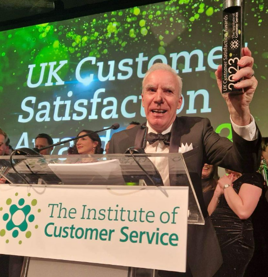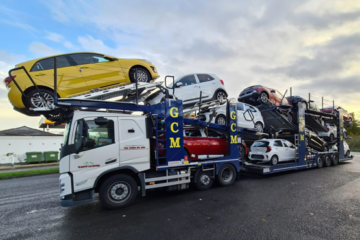
Automotive businesses who invest in skills can expect a 3% uplift in annual turnover, compared to a 4% drop in turnover for businesses who do nothing to address the skills gap in their organisation.
That is the finding of a new report by Ennis & Co Group, the automotive and mobility executive search and talent research specialists, who have developed a ‘Skills Gap Cost Model’ to help organisations put a financial number on their skills shortages.
Taking the example of a business with a headcount of 250 and an annual turnover £35 million, the report projects an increase in turnover of £1.05 million if the business invests in upskilling and recruitment. By contrast, zero investment would result in a £1.45 million decrease due to additional costs and lost revenue opportunities.
The research was carried out in response to industry demand following the publication last year of Ennis & Co Group’s ‘Skills Evolution Roadmap 2025’ – a research paper that highlighted the specific skills shortages being experienced across the automotive and mobility sector and provided a roadmap to help businesses develop their skills strategies.
While most businesses acknowledged the impact that skills shortages were having on their bottom line, few were able to quantify the precise cost implications with any accuracy.
The latest report, The Cost of your Skills Gap’, was based on interviews with 42 senior executives combined with business and academic research from multiple sources.
To coincide with the report publication, the Skills Gap Cost Model has been made available as an interactive calculator on the Ennis & Co website to enable businesses to analyse their individual numbers.
Lynda Ennis, co-founder and CEO of Ennis & Co Group, said: “Our research shows that there are strong financial benefits to making the right skills investment at the right time. Given the challenges of the talent market, with automotive and mobility businesses competing with other sectors for the same ‘hot’ skills, I would argue that upskilling and recruitment needs to be at the very heart of business strategy and owned at board level.
“The best way to achieve boardroom buy-in is to put actual numbers on the financial upside of investing in skills and the downside of doing nothing. This paper addresses the current knowledge vacuum directly by providing a financial model to help businesses quantify the opportunities and cost of skills gaps in their organisation.
“The need for new skills is both a challenge and an opportunity as the sector adapts to transforming technologies and the legislative requirements of the net zero agenda. It is understandable for leaders to focus on negatives such as the cost of upskilling their workforce, employee attrition or the difficulty and expense of hiring talent in a tight skills market, but if you focus too much on the dangers, you can fail to spot the opportunities.”
- SEO Powered Content & PR Distribution. Get Amplified Today.
- PlatoData.Network Vertical Generative Ai. Empower Yourself. Access Here.
- PlatoAiStream. Web3 Intelligence. Knowledge Amplified. Access Here.
- PlatoESG. Carbon, CleanTech, Energy, Environment, Solar, Waste Management. Access Here.
- PlatoHealth. Biotech and Clinical Trials Intelligence. Access Here.
- Source: https://www.am-online.com/news/people-news/2023/10/19/ennis-and-co-research-gauges-financial-benefit-of-skills-investment
- :has
- :is
- 250
- a
- Able
- academic
- academic research
- accuracy
- Achieve
- acknowledged
- across
- actual
- adapts
- Additional
- address
- addresses
- agenda
- an
- analyse
- and
- annual
- any
- ARE
- argue
- AS
- At
- attrition
- automotive
- available
- based
- BE
- been
- being
- benefit
- benefits
- BEST
- board
- both
- Bottom
- business
- business strategy
- businesses
- but
- by
- CAN
- carried
- ceo
- challenge
- challenges
- CO
- Co-founder
- combined
- compared
- competing
- contrast
- Core
- Cost
- Costs
- Current
- dangers
- decrease
- Demand
- develop
- developed
- Difficulty
- directly
- do
- doing
- downside
- Drop
- due
- Employee
- enable
- Ether (ETH)
- evolution
- example
- executive
- executives
- expect
- expense
- experienced
- FAIL
- few
- financial
- finding
- Focus
- following
- For
- from
- gap
- gaps
- given
- Group
- Group’s
- Have
- having
- headcount
- Heart
- help
- Highlighted
- Hiring
- HTTPS
- i
- if
- Impact
- implications
- in
- Increase
- individual
- industry
- interactive
- Interviews
- Invest
- investing
- investment
- Invests
- IT
- knowledge
- Last
- Last Year
- latest
- leaders
- Legislative
- Level
- Line
- lost
- made
- Making
- Market
- million
- mobility
- model
- most
- much
- multiple
- Need
- needs
- negatives
- net
- New
- nothing
- number
- numbers
- of
- on
- opportunities
- Opportunity
- or
- organisation
- Organisations
- Other
- out
- owned
- Paper
- plato
- Plato Data Intelligence
- PlatoData
- precise
- projects
- provided
- providing
- Publication
- put
- recruitment
- report
- Requirements
- research
- response
- result
- revenue
- right
- roadmap
- Said
- same
- Search
- sector
- Sectors
- senior
- shortages
- Shows
- skills
- skills gap
- Sources
- specialists
- specific
- Spot
- strategies
- Strategy
- strong
- such
- Talent
- Technologies
- that
- The
- their
- There.
- this
- time
- to
- too
- transforming
- turnover
- understandable
- Uplift
- Upside
- upskilling
- Vacuum
- very
- was
- Way..
- were
- WHO
- windows
- with
- Workforce
- would
- year
- you
- Your
- zephyrnet
- zero












